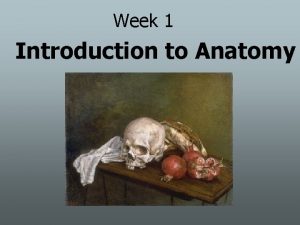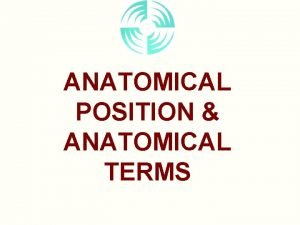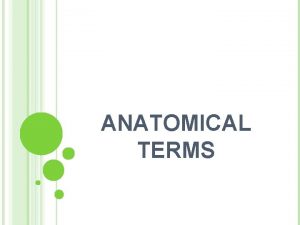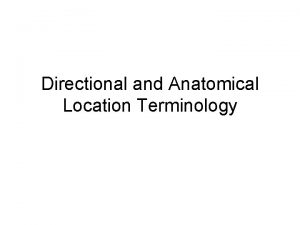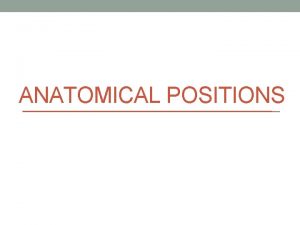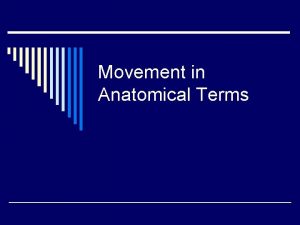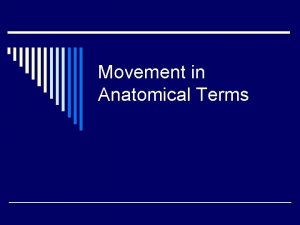Anatomical Terms Chapter 1 Power Point 2 Anatomical








- Slides: 8

Anatomical Terms Chapter 1 Power. Point #2

Anatomical Position In anatomical position, the body is erect, with head and toes pointed forward and arms hanging at sides with palms facing forward. QUIZ: Stand assume the anatomical position

Directional Terms � Very important that you understand directional terms are used relative to the midline of the body. � There will be a difference if you are referring to bipeds vs. quadripeds (man vs. dog) Worksheet: Terms of position and direction Color as instructed. Use p. 12 -13 and quiz a partner on orientation of body. Use sentence stems provided on p. 13 if that helps you, or make up your own.

Regional Terms � Anterior Vs. Posterior body landmarks, color in the sheets and study the terms. Use p. 13 as a study guide for the terms and meanings. This is like learning a new language, it will take a little time and work to get it. � If you like flashcards make some with the term on 1 side and the description or picture on the other. � Take a surface anatomy worksheet and try to fill in the labels when you feel comfortable with the new terms.

Body Planes � Sagittal Section-cut made lengthwise, divides body into left and right parts � Frontal section-cut made lengthwise that divides body into anterior and posterior parts � Transverse section-cut made horizontally(cross section) divides body into superior and inferior parts. � Worksheet: anatomic planes & sections

Quiz 1 � Identify � Observe activity what is being asked on Quiz 1. longitudinal and transverse sections

Body cavities � Dorsal Body Cavity includes cranial and spinal cavity � Ventral Body Cavity includes thoracic cavity which is separated by the diaphragm from the abdominal and pelvic cavity. � It helps to divide into quadrants and regions when studying p. 5 -6 of lab manual � Activity: find regions of the abdominal surface on torso model & on yourself p. 6 lab

Review � Lab Manual p. 241 -242 � Test tomorrow!


